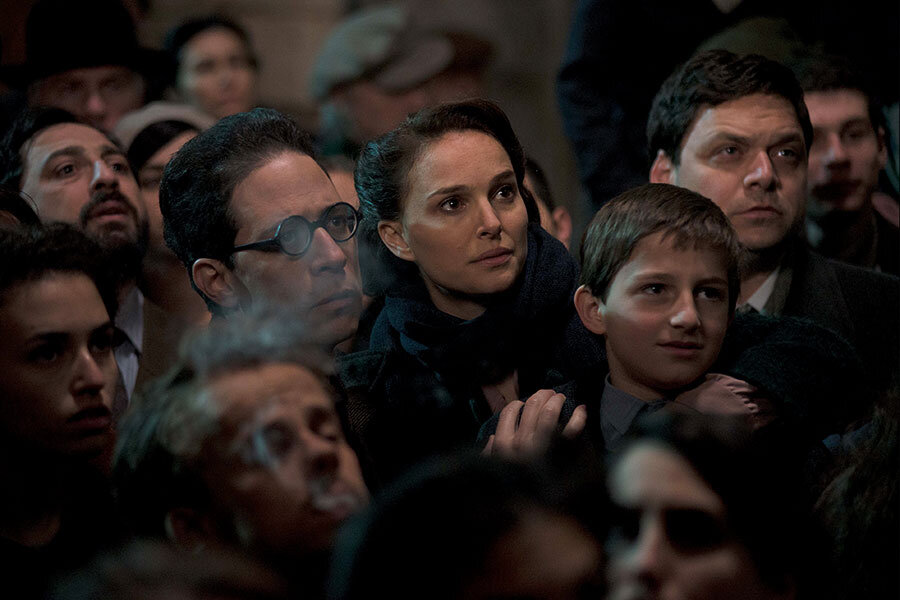'A Tale of Love and Darkness' is often irretrievably dour
Loading...
Natalie Portman is nothing if not ambitious. She has chosen for her directorial debut, “A Tale of Love and Darkness,” a sprawling autobiographical tome by the Israeli novelist Amos Oz. She also stars in the film and wrote its screenplay.
I admire the attempt more than the execution, which is often irretrievably dour. But throughout the film, there are moments when its people and their predicaments come alive. Just because Portman bit off more than she can chew doesn’t mean there aren’t morsels to savor.
The film takes place during the time when the British Mandate gave way to the birth of Israel in 1947. Twelve-year-old Amos (Amir Tessler), wide-eyed and shy, keeps to himself at school and adores his parents: Arieh (Gilad Kahana), an intellectual who resists British rule, and Fania (Portman), a learned woman whose love for romance and fantasy inspires her son. (Her inner life is much richer than her outer life.) The darkening of Fania’s mood into full-fledged clinical depression, along with Amos’s awakening into adulthood, is the film’s true subject.
As a director, Portman (who moved to the United States from Israel as a child) grasps how this family would argue and kibitz among themselves while maintaining a public face of rectitude. In perhaps the film’s best scene, Amos, accompanied by his parents, is invited to a lavish party hosted by an Arab family. Instructed by his wary father to behave like a perfect gentleman, he nevertheless loses his cool when he meets a friendly Arab girl his own age and an accident ensues. Without underscoring, the scene also stands as a microcosm for the Arab-Israeli conflicts that have blighted so many lives.
Because Tessler is a fine little actor, and because Amos’s life is so captivating, I wish Portman had focused more on the child’s coming of age. (In one startling scene, we see him blithely collecting empty bottles for use as Molotov cocktails against the British.) But much of the film is instead given over to Fania and her increasingly distraught mind-set. Although late in the film we are led to believe that her condition is rooted in the loss of much of her Polish family in the Holocaust and the dashing of her romantic dreams, what we are witnessing seems more like a far-too-thinly-fleshed-out psychological case history. Instead of bringing us closer to Fania’s desperation, Portman’s performance, progressively blank-faced, closes us off.
It doesn’t help that most of the film is shot in a thick gray-green overlay that sets an immediate tone of abject dreariness. I’m not implying that Portman should have included high-kicking musical numbers to lighten the mood, but there is a Jewish tradition of mining the black comedy in tragedy that the film would have done well to avail itself of. The gloom in “A Tale of Love and Darkness” overwhelms the love and lessens even the impact of the darkness. Grade: B- (Rated PG-13 for thematic content and some disturbing violent images.)







